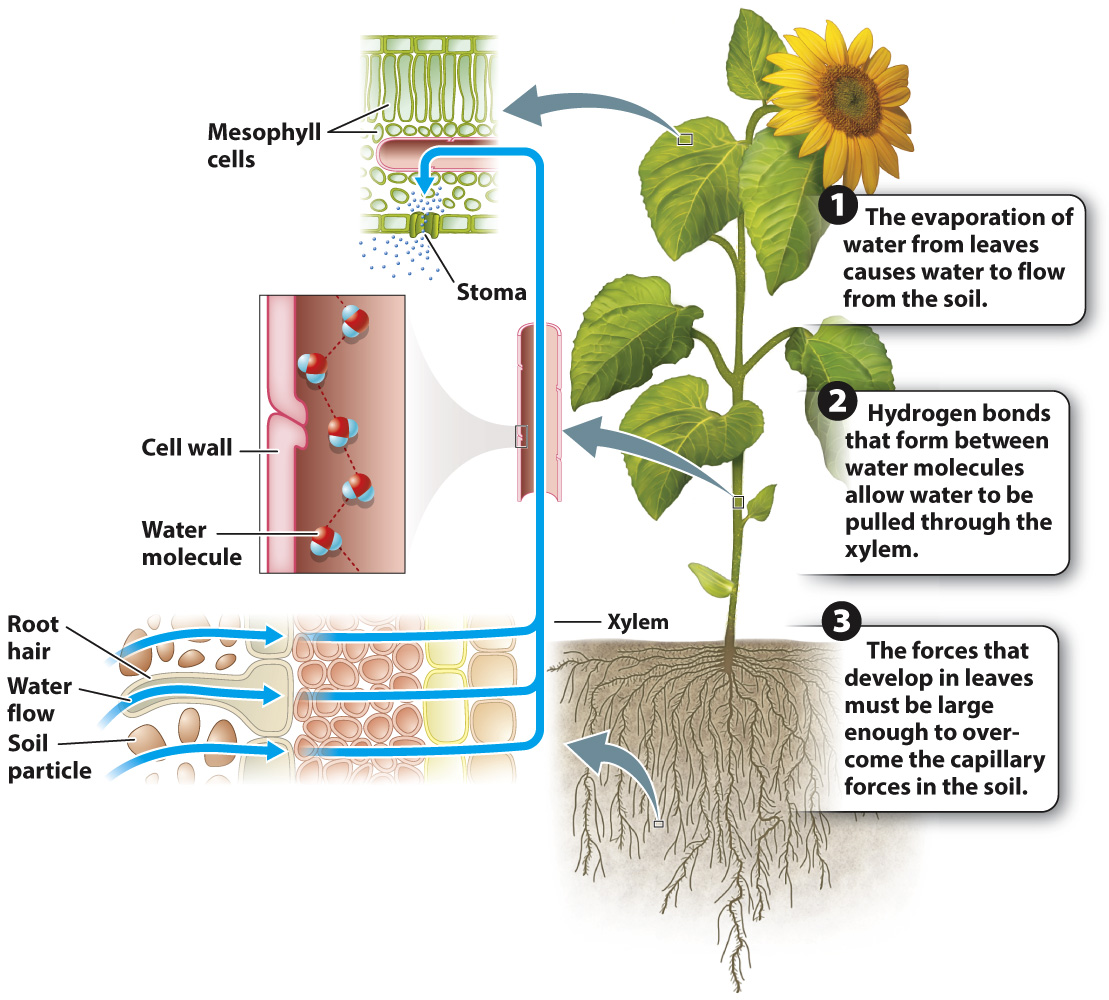Water is pulled through xylem by an evaporative pump.
If you cut a plant’s roots off under water, the leaves continue to transpire for some time. The persistence of transpiration when roots are absent demonstrates that the driving force for water transport is not generated in the roots, but instead comes from the leaves. In essence, water is pulled through xylem from above rather than being pushed from below.
The forces pulling water upward through the plant are large. Not only must these forces be able to lift water against gravity, they must also be able to pull water from the soil, which becomes increasingly difficult as the soil dries. In addition, they must be able to overcome the physical resistance associated with moving water through the plant itself. To replace water lost by transpiration with water pulled from the soil, the leaves must exert forces that are many times greater than the suctions that we can generate with a vacuum pump (Fig. 29.11). How do leaves exert this force?
HOW DO WE KNOW?
FIG. 29.11
How large are the forces that allow leaves to pull water from the soil?
BACKGROUND The idea that water is pulled through the plant by forces generated in leaves was first suggested in 1895. However, without a way to measure these forces, there was no way to know how large they were.
HYPOTHESIS In 1912, German physiologist Otto Renner hypothesized that leaves are able to exert stronger suctions than could be generated with a vacuum pump.
EXPERIMENT Renner measured the rate at which water flowed from a reservoir into the cut tip of a branch of a transpiring plant. He next cut off about 10 cm of the branch and attached a vacuum pump in place of the transpiring plant. He then compared the flow rate through the branch when attached to the transpiring plant with the flow rate generated by the vacuum pump.

RESULTS Renner found that the flow rates generated by transpiring plants were two to nine times greater than the flow rates generated by the vacuum pump.
CONCLUSION A transpiring plant pulls water through a branch faster than a vacuum pump. Therefore, the pulling force generated by a transpiring plant must be greater than that of a vacuum pump. Because vacuum pumps create suctions by reducing the pressure in the air, the maximum suction that a vacuum pump can generate is 1 atmosphere. Thus, the maximum height that one can lift water using a vacuum pump is 10 m (33 feet). The forces that pull water through plants have no comparable limit because they are generated within the partially dehydrated cell wall. This is why plants can pull water from dry soils and why they can grow to more than 100 m in height.
FOLLOW-
SOURCES Renner, O. 1925. “Zum Nachweis negativer Drucke im Gefässwasser bewurzeler Holzgewachse.” Flora 118/119:402–
When stomata are open, water evaporates from the walls of cells lining the intercellular air spaces of leaves. The partial dehydration of the cell walls creates a force that pulls water toward the sites of evaporation, much as water is drawn into a sponge. This force is transmitted through the xylem, beginning in the leaf veins, then down through the stem, and out through the roots to the soil (Fig. 29.12). Water can be pulled through xylem because of the strong hydrogen bonds that form between water molecules.
